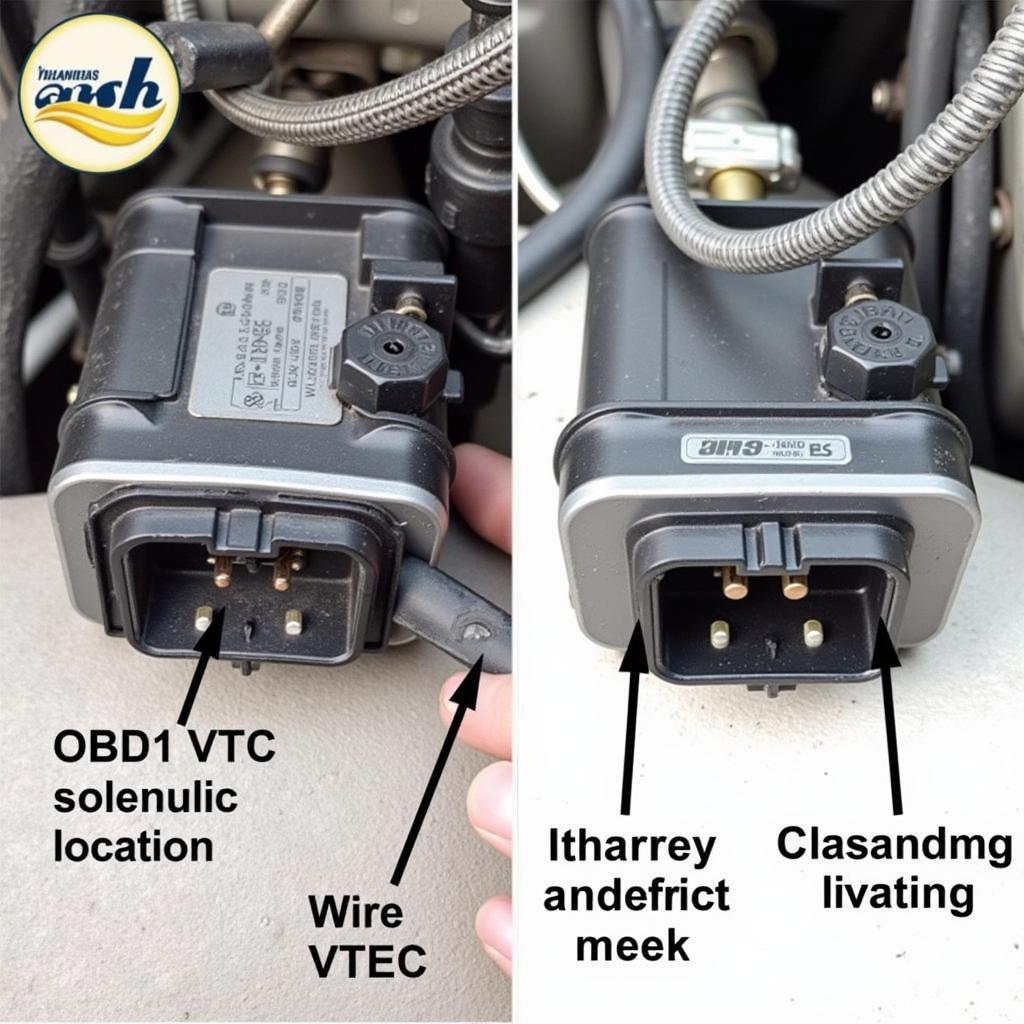The VTEC (Variable Valve Timing and Lift Electronic Control) system is a hallmark of Honda performance engines, renowned for its ability to deliver both fuel efficiency and high-RPM power. At the heart of this system lies the VTEC solenoid, a critical component responsible for activating VTEC. However, navigating the differences between OBD1 and OBD2 systems, especially concerning the VTEC solenoid, can often leave Honda enthusiasts puzzled. This article delves into the nuances of OBD1 vs. OBD2 VTEC solenoids, clarifying their functions and how they impact your Honda’s performance.
Deciphering the Acronyms: OBD1 and OBD2
Before we dive into the specifics of the VTEC solenoid, it’s essential to understand the systems it operates within: OBD1 (On-Board Diagnostics 1) and OBD2 (On-Board Diagnostics 2). These systems, implemented by car manufacturers to monitor and control engine emissions, dictate how your car’s computer interacts with various components, including the VTEC solenoid.
OBD1, introduced in the late 1980s and early 1990s, is a simpler, less standardized system. Each car manufacturer had its own variation of OBD1, making diagnosis and repair more challenging across different makes and models.
OBD2, mandated in the United States for all vehicles manufactured after 1996, brought standardization and significantly improved diagnostic capabilities. This standardization simplified troubleshooting and repair for mechanics and car owners alike.
The Role of the VTEC Solenoid
Now, let’s focus on the star of our show: the VTEC solenoid. This electromechanical valve, controlled by your Honda’s ECU (Engine Control Unit), regulates oil flow to engage and disengage the VTEC system. When activated, the VTEC solenoid directs pressurized oil to the VTEC mechanism within the engine, engaging a different camshaft profile with more aggressive valve timing and lift. This switch results in increased horsepower and torque at higher RPMs.
OBD1 vs. OBD2 VTEC Solenoids: Key Distinctions
While the fundamental function of the VTEC solenoid remains consistent across OBD1 and OBD2 systems, several key distinctions exist:
1. Electrical Connector and Wiring:
One of the most noticeable differences lies in the electrical connector and wiring harness. OBD1 VTEC solenoids typically have a two-wire connector, while OBD2 solenoids feature a three-wire connector. This difference reflects the more sophisticated control strategy employed by OBD2 systems.
2. ECU Control and Activation:
OBD2 systems offer more precise control over the VTEC solenoid, allowing for variable activation points based on factors like engine load, throttle position, and RPM. This dynamic control strategy optimizes performance and fuel efficiency across a wider range of driving conditions.
3. Diagnostic Capabilities:
The standardized nature of OBD2 systems allows for more straightforward diagnosis of VTEC solenoid issues. OBD2 scanners can readily retrieve specific trouble codes related to the VTEC solenoid, pinpointing the problem area.
 OBD1 vs OBD2 VTEC Solenoid Connectors
OBD1 vs OBD2 VTEC Solenoid Connectors
Common VTEC Solenoid Issues and Troubleshooting
Whether you’re running an OBD1 or OBD2 Honda, several common issues can arise with the VTEC solenoid:
1. Sticking Solenoid:
Over time, dirt, debris, or varnish buildup within the solenoid can cause it to stick in either the open or closed position. This issue can lead to erratic VTEC engagement or prevent it from activating altogether.
2. Electrical Problems:
Damaged wiring, a faulty solenoid, or a malfunctioning ECU can disrupt the electrical signals that control the VTEC solenoid.
3. Low Oil Pressure:
The VTEC solenoid relies on adequate oil pressure to function correctly. Low oil levels, a clogged oil filter, or a failing oil pump can all result in insufficient oil pressure, hindering VTEC engagement.
4. Faulty ECU:
In some cases, the ECU itself may malfunction, sending incorrect signals to the VTEC solenoid.
Symptoms of a Faulty VTEC Solenoid
A malfunctioning VTEC solenoid can manifest itself through various symptoms, including:
- Check Engine Light: One of the most common indicators of a VTEC solenoid issue is the illumination of the check engine light on your dashboard.
- Erratic VTEC Engagement: You might experience inconsistent or delayed VTEC activation, leading to a noticeable lack of power at higher RPMs.
- Poor Fuel Economy: A stuck-open VTEC solenoid can cause reduced fuel efficiency as the engine operates in a less economical mode.
- Engine Performance Issues: Hesitation, stumbling, or a decrease in overall engine performance can be indicative of a faulty VTEC solenoid.
Conclusion: Navigating the VTEC Solenoid Landscape
Understanding the nuances of OBD1 vs. OBD2 VTEC solenoids is crucial for any Honda enthusiast. While the core function remains similar, the electrical connections, control strategies, and diagnostic capabilities differ significantly. By recognizing these distinctions and being aware of common VTEC solenoid problems, you can ensure the optimal performance and longevity of your Honda’s engine.
Remember, when in doubt, consult a qualified mechanic specializing in Honda vehicles. They can accurately diagnose and address any VTEC solenoid issues, keeping your Honda running smoothly and delivering that signature VTEC kick.
